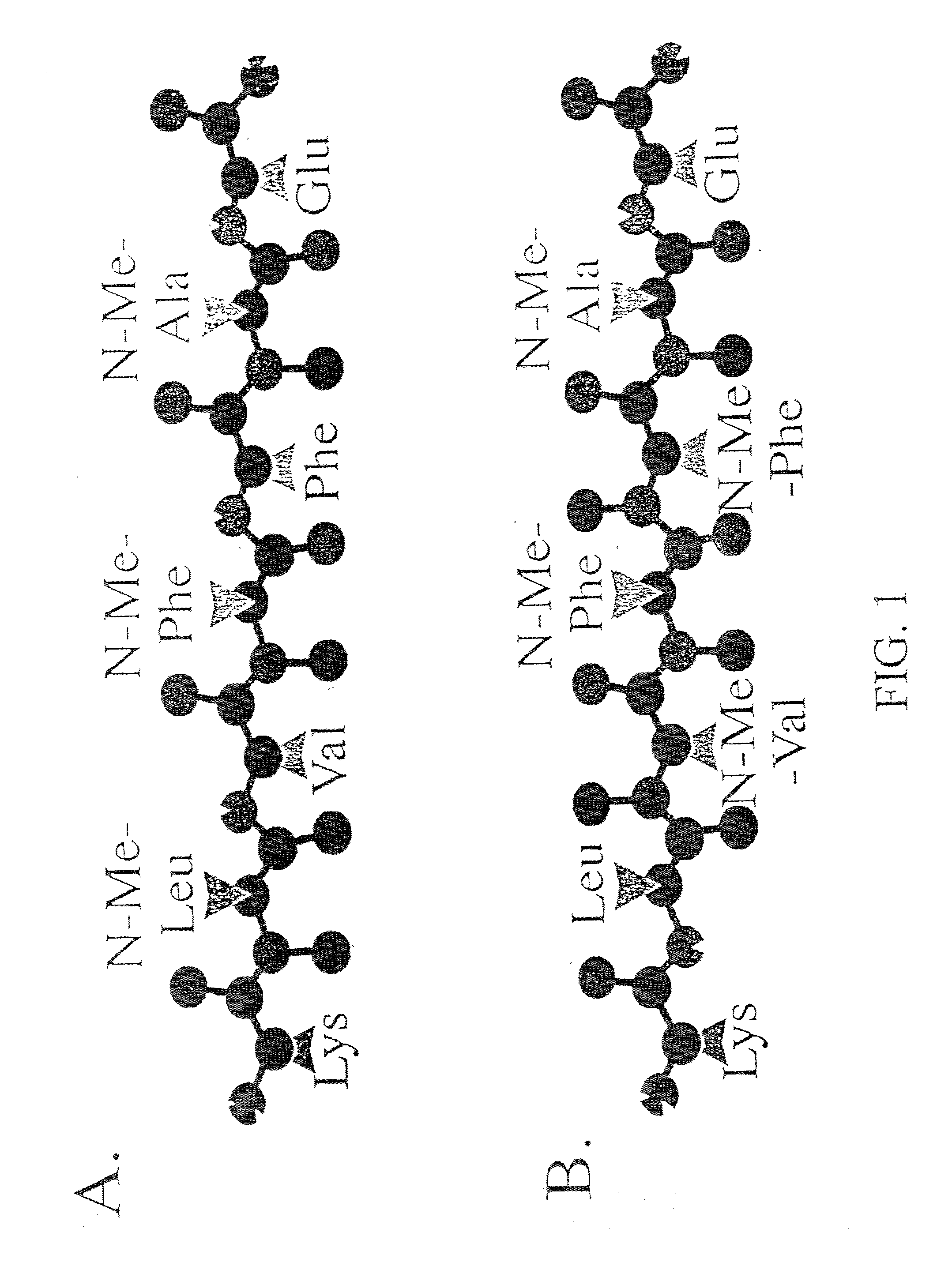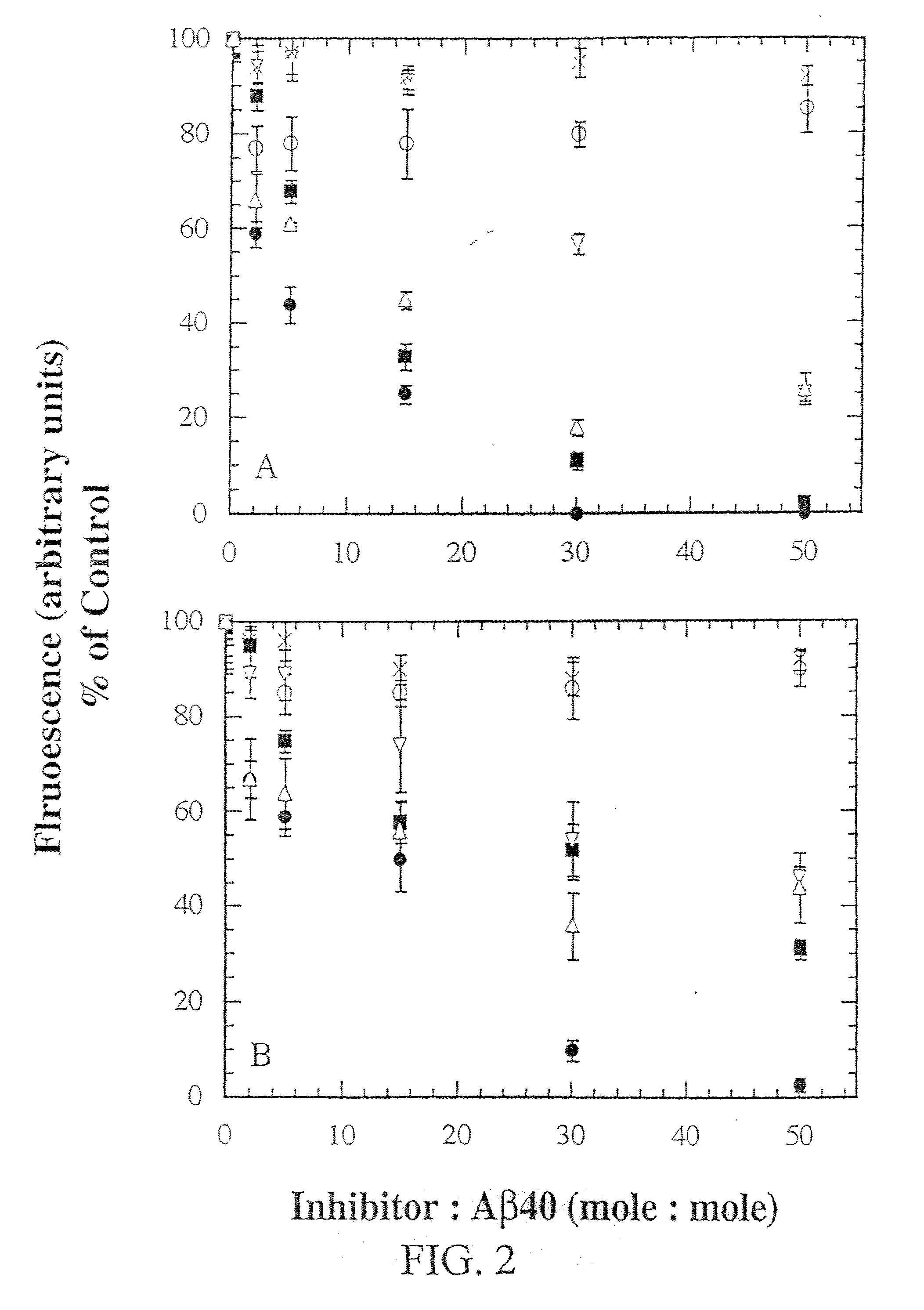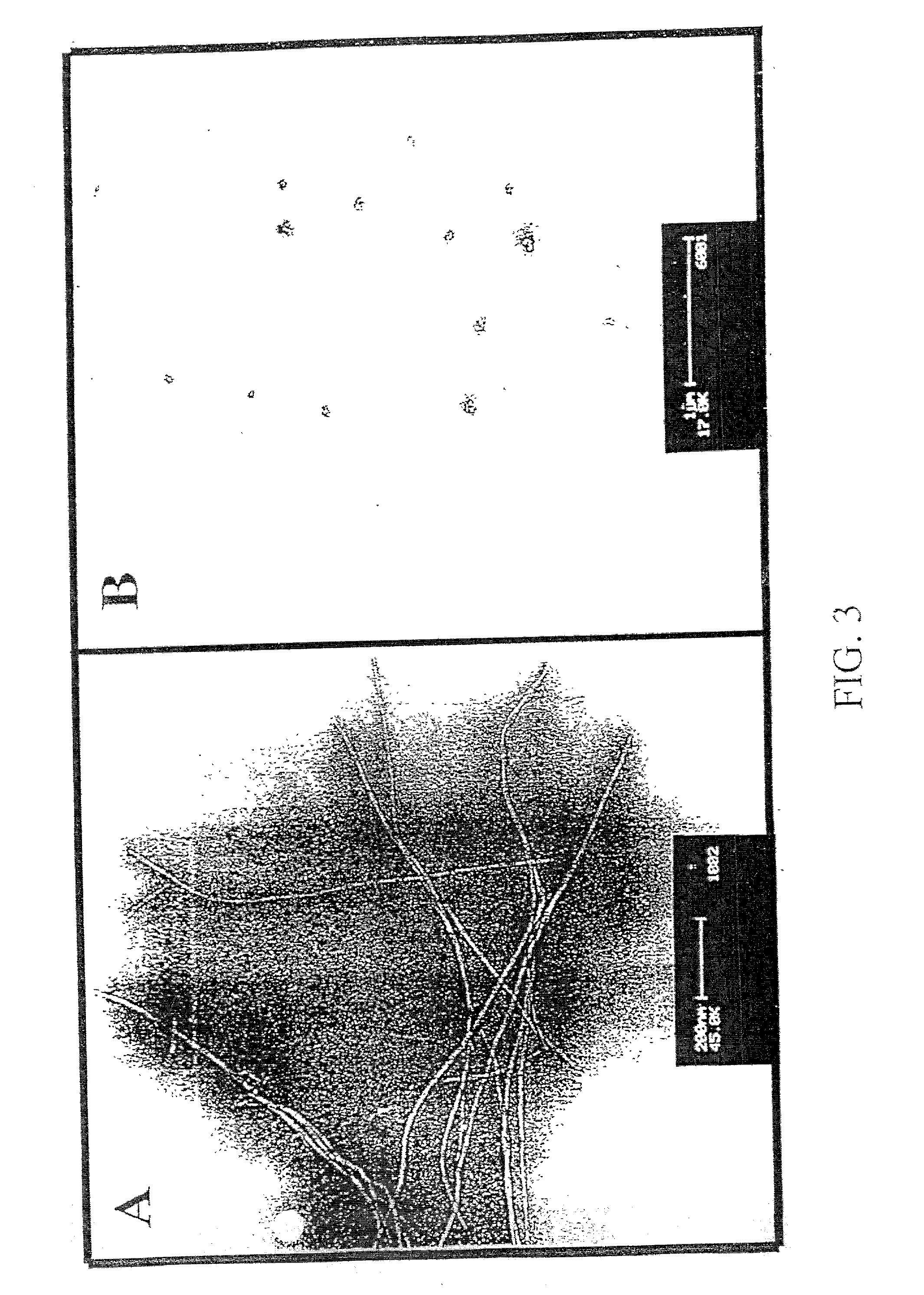Inhibitors and disassemblers of fibrillogenesis
a technology of fibrillogenesis and disassembly, which is applied in the direction of peptide/protein ingredients, peptide sources, instruments, etc., can solve the problems of limiting the potential of a therapeutic agent, aggregating and forming fibrils by itself,
- Summary
- Abstract
- Description
- Claims
- Application Information
AI Technical Summary
Benefits of technology
Problems solved by technology
Method used
Image
Examples
example 1
[0127] A. Peptide Synthesis, Purification And Analysis
[0128] The human A.beta.40 peptide was synthesized using standard 9-fluorenylmethoxycarbonyl chemistry on an Applied Biosystems model 431A peptide synthesizer:
[0129] NH.sub.2-DAEFRHDSGY.sup.10 EVHHQKLVFF.sup.20 AEDVGSNKGA.sup.30 IIGLMVGGVV.sup..beta.40--COOH
[0130] A fibril forming peptide (Forlorn et al., 1993) derived from the human prion protein, amino acids 106-126 was synthesized with a free carboxyl terminus:
[0131] NH.sub.2--.sup.106KTNMK.sup.110HMAGAAAAGA.sup.120 VVGGLG.sup.126-COOH
[0132] Peptides with a carboxamide at the C-terminal were prepared by using FMOC-amide MBHA resin (Midwest Biotech). The N-methyl peptides were synthesized manually using 9-fluorenylmethoxycarbonyl chemistry and an amide MBHA resin (Midwest Biotech). Amino acids added after N-methyl amino acids (Novabiochem) were coupled for 3-5 hours using the HATU (PE Biosystems) activating reagent. Other residues were coupled for 1.5 hours with HOBt / DCC (PE Bi...
example 2
[0134] A. Design and Synthesis of Fibrillogenesis Inhibitor Peptides: A.beta.16-22 and Variants of A.beta.40 .beta.16-22
[0135] The peptides described below are based on the central, hydrophobic "core domain" of A.beta.1-40 that is critical for fibril formation, since alteration of this domain abrogates fibrillogenesis (Hilbich et al., 1992; Wood et al, 1995). The strategy was to incorporate N-methyl amino acids into alternate positions of this short peptide. In a .beta.-sheet, alternate amide protons and carbonyl oxygens are oriented to opposite sides of the peptide backbone. Thus, a peptide containing an alternation of ordinary amino acids and N-methyl amino acids, when in the .beta.-strand (or extended) conformation, should have one "face" containing ordinary amino acids and one "face" containing N-methyl amino acids (FIG. 1A and FIG. 1B).
[0136] Table 1 lists the synthesized peptides. Peptide I (A.beta.16-22) consists of amino acids .beta.116-22 of A, and an amidated C-terminus, b...
example 3
[0140] A. Fibrillogenesis and Fibril Disassembly Assays A.beta.16-22 Variants
[0141] Fibril inhibition and disassembly activities of inhibitor peptides was measured using standard techniques as described herein.
[0142] Two of the N-methyl peptides, A.beta.16-22m and A.beta.16-22mR, prevented fibril formation of A.beta.40 in a dose dependent manner, in vitro. These are the two peptides containing N-methyl amino acids in alternating positions of the sequence. FIG. 2A shows thioflavin fluorescence as a function of inhibitor concentration; since a constant concentration of A.beta.40 peptide was used, this was expressed as the molar ratio of inhibitor:A.beta.40 peptide.
[0143] In order to compare relative potency of the peptides, data for both inhibition of fibrillogenesis and disassembly of pre-formed fibrils were fit to a simple equation. Values of the two parameters for each of the peptides are listed in Table 2. Both A.beta.16-22m and A.beta.16-22mR were effective inhibitors of fibrillo...
PUM
| Property | Measurement | Unit |
|---|---|---|
| Molar density | aaaaa | aaaaa |
| Molar density | aaaaa | aaaaa |
| Molar density | aaaaa | aaaaa |
Abstract
Description
Claims
Application Information
 Login to View More
Login to View More - R&D
- Intellectual Property
- Life Sciences
- Materials
- Tech Scout
- Unparalleled Data Quality
- Higher Quality Content
- 60% Fewer Hallucinations
Browse by: Latest US Patents, China's latest patents, Technical Efficacy Thesaurus, Application Domain, Technology Topic, Popular Technical Reports.
© 2025 PatSnap. All rights reserved.Legal|Privacy policy|Modern Slavery Act Transparency Statement|Sitemap|About US| Contact US: help@patsnap.com



